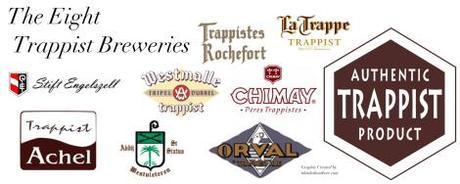
In the first part, The Brewing Monks: A Brief History of the Trappist Order and Monastic Brewing, we covered the basic history of Trappists and how monasteries became associated with brewing. In The Brewing Monks: The Eight Trappist Breweries (Part 1), The histories and beers of Rochefort, Stift Engelszell, Westmalle, and Westvleteren were explored. In this segment, we’ll look at the beers and history of Chimay, La Trappe, Achel, and Orval. Where available, I’ll link the beers to reviews I’ve written and will continue adding in links as I post the appropriate reviews. The third full part will discuss a few Trappist breweries in the works as well as non-Trappist monastic breweries that are currently producing beer.
Sint Benedictus Abdij – De Achelse Kluis (Achel) – Valkenswaard, Belgium (Est. 1846, Brewery Est. 1852 & 2001)

It wasn’t until 1846 when the Trappist monks at Westmalle decided to help establish a Cistercian community at Achel, that the community was revived. With the help of several beneficiaries, Westmalle bought the lands and helped construct the buildings that would become Achel. In 1852, the first recorded beer was brewed. Achel continued to brew beer regularly until the monastery was abandoned as WWI swept over their lands. The Germans, like they did at several other Trappist breweries, dismantled the brewery to use the metals in their war efforts.
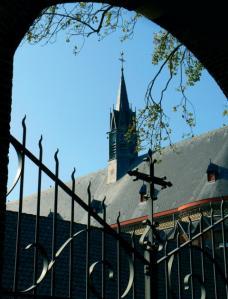
(Picture from achelsekluis.org)
It’s unclear if the community was repopulated after WWI ended. From what I can find, it doesn’t appear that this happened until after WWII when Achel was partially rebuilt between 1946 and 1952 (The monasteries don’t always give much detail about their histories and I’ve had to pull information from several random sources). The brewery, however, wasn’t rebuilt at this time. It wasn’t until 1998 when the monks at Achel sought the help of the monks at Westmalle and Rochefort to help them reestablish the long gone brewery. Brother Thomas, recently retired from the Westmalle brewery, wrote the initial recipes and helped the monks brew their first batches. The first beers, Achel 8 Blond and 8 Brune, were released in 2001. Breaking with tradition, the brewery was opened as more of a “brewpub,” making it the only Trappist brewpub. The beer is brewed by one of the brothers with aid from Marc Knops, a well respected secular brewer.
The beers are brewed with various Dingemans malts, whole flower hops obtained from Westmalle as well as with Westmalle yeast. Various sugars, white and caramel liquid sugar, are used on the higher alcohol beers.
Achel Blonde 5 – A 5% ABV blonde ale only available at the Abbey
Achel Brune 5 – A 5% ABV brown ale only available at the Abbey
Achel Blonde 8 – An 8% ABV blonde ale or Tripel
Achel Bruin 8 – An 8% ABV brown ale
Achel Extra Blonde – A 9.5% ABV blonde ale only available at the Abbey
Achel Extra Brune – A 9.5% ABV strong brown ale in the Quadruple style range
Achel is imported into the US by Shelton Brothers.
Abbaye de Notre-Dame de Scourmont (Chimay) - Baileux, Belgium (Est. 1850, Brewery Est. 1862)
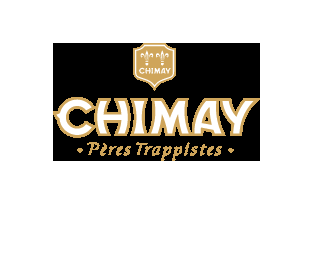
(Logo from chimay.com)
The History of Chimay
Chimay was conceived when a local priest convinced Prince Joseph II of Chimay to cultivate an abbey. Like nobles throughout time, he hoped to be able to turn some wild, unused land into a prosperous hub for his domain. 10 monks from St. Sixtus (Westvleteren) arived in July 1850 and began to clear the land. By 1862, the first beers were flowing at Chimay. The initial beer brewed was a bottom-fermenting beer described as being based on a Dortmunder style. This didn’t last long as the Westvleteren monks decided to brew a strong, dark ale similar to what they used to make. By 1875, they were selling the the stronger version in 750ml bottles labeled as “Biere Forte.”
The years prior to WWI were busy but not well documented. With the outbreak of of war in Europe, the abbot and 11 other monks were mobilized and functioned as chaplains and stretcher-bearers. Two were killed in action. In addition to the loss of two monks, the brewery suffered when the Germans took the brewery’s copper kettles.
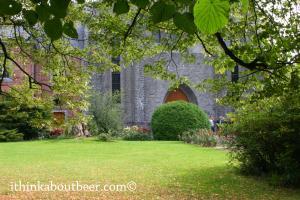
WWII saw even more disruptions to the monks’ lives. 59 monks were called up for military service. The monastery was evacuated several times by the Germans who stripped down the monastery of all useable materials, including the the brewing equipment. The monks returned until April 12, 1942, when they were forced to flee until Belgium could be liberated. Even then, the Germans didn’t leave the monks alone.
The Gestapo arrested 11 monks, including Father Theodore (more about him later). No one knows exactly why they were arrested except for rumors that the monks had helped many Jewish families.
The monks returned to the Abbey in September of 1944 after American troops liberated that portion of Belgium (In honor of the US troops, they would buy a portion of their hops from the US). When they returned, the monastery was a disaster. Most of the buildings were destroyed. The monks began working on reviving the monastery and their brewery. Unfortunately, the beers they were producing were of poor quality and 80% were being returned and being described as “ropey.” The brewery had an infection! Most likely it was a pediococcus bacteria infection, which can cause rope like goo in beer. The monks had a hard decision to make: stop making beer or radically change what they were doing.
The Abbot, Dom Anselme, called upon Professor Jean De Clerk to help them out. De Clerk was one of the key figures in revolutionizing brewing methods in Belgium after WWII. He applied a rigorous scientific method to brewing and brewing operations creating several texts that are still valued today. When he consulted with Dom Anselme, he said the brewery needed to be supervised by somebody with scientific training. Dom Anselme decided up Father Theodore as his candidate who was a doctor with a degree in theological sciences. De Clerk decided to take on the task of helping Chimay, but only if Father Theodore attended his brewing courses at the university in Louvain (Leuven). It was decided; the future of Chimay’s brewery would be entrusted to Father Theodore.
Father Theodore took to his task with gusto. He attended all 120 hours of De Clerk’s classes in one academic year and absorbed all of the professor’s books. The brewery was thoroughly sanitized and cleaned. Father Theodore then setup the monastery’s lab. With the help of Father Dr. Dropsy (a colleague of Prof. De Clerk), Father Theodore was able to isolate the single cell of yeast that would revive the Chimay brand. Pretty soon, the Chimay monks had a different problem at the brewery. The beer was so good that most of the monks had to work in the facilities to keep up with demand which reduced their time for prayer. De Clerk and Theodore had saved the brewery at Chimay and started a deep friendship that would last until Jean De Clerk passed away in 1978. He was given the honor of being buried at Chimay. Father Theodore continued as Chimay’s master brewer until his retirement in 1990, making him the last brewing monk at Chimay.
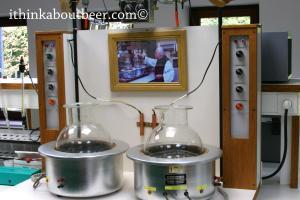
(Father Theodore used these to brew tiny batches of a blonde beer that would become Chimay White).
The success of the brewery, coupled with necessity, allowed Father Theodore to work towards his ultimate goal of providing employment for the region. The south of Hainaut province is extremely poor with few good job options. Father Theodore pushed the brewery to expand, grow, and modernize so that they could help the area develop economically. By the 1970′s, the number of monks were declining as their ages were increasing. The Father Abbot sat down with his consultant, Bernard Calicis, to discuss the future of Chimay’s endeavors: would they pull back like Westvleteren had, or would they continue to grow and support their region.
They decided that the monks would pull back from the increasing demands of the monastery’s successful and growing business ventures so they could more closely pursue their spiritual goals. The day to day operations and control would be turned over to secular employees, although the monks would still have final say on decisions and ultimate control of the direction of their interests. Bernard Calicis would be put in charge of all of Chimay’s business ventures. Demand exploded, forcing the monastery to expand the brewery and move the bottling plant into town (the beer is still trucked into town from the monastery to be bottled). They even had to brew the Chimay White at the Trappist monastery at Tilburg, Konigshoeven, until they had enough space back at Chimay.
The brewery has continued to grow in both capacity and technology. Chimay is, today, a first rate brewery using the most modern techniques and equipment to produce a high-quality traditional beer. Every time an upgrade or change is planned, the two things the monastery and their secular directors look at are: will it maintain or increase the quality of the beer and will it allow us to provide the same number or more jobs? When offered an upgrade, Chimay won’t install if it will cause them to lay off employees. Today, Chimay provides over 200 good paying jobs with benefits via their various local enterprises making them the driving economic force in this depressed region of Belgium.
The Beers of Chimay
As noted above, the Chimay Premiere/Rouge/Red Cap probably developed into it’s modern form in the years between WWI and WWII with some modernization under Father Theodore. Chimay Blue/Grand Reserve was initially created and released in 1948 as a Christmas seasonal. It was created to be a stronger, richer version of the Rouge and soon garnered such praise and success that the brewery decided to add it to the full time line in 1954.
The White Cap/Tripel was released to the world in 1966, but had been brewed for a select drinker for quite a while: Father Theodore. Father Theodore preferred lighter colored beers to the two darker one the brewery made, so he’d brew tiny batches on his little system (you can see the system he used in the picture above). White was brewed for just one drinker. When the brewery decided to release a third “lighter” recipe to keep up with changing demand, Father Theodore modified his recipe into the current White label. The 750ml bottles are also labeled as “Cinq Cents” because the beer was initially released to commemorate the 500th anniversary of the Principality of Chimay.
Chimay also brews a patersbier known as Doree that is only available for employees, the monks, and guests of their inn and guestrooms. It’s the only beer in their line that actually uses spice. It was announced earlier in 2013 that the beer would officially be sold to select accounts in Belgium as way to test the market for wider release.
The newest beer to be brewed by Chimay was released in 2012 on a super-limited, world-wide release to commemorate the 150th anniversary of Chimay as a brewery. ”Cent Cinquante” or “150″ is a high alcohol blond beer of 10% ABV.
Doree – A 4.6% ABV Trappist single.
Red – A Belgian Dubbel of 7.1% ABV
White – A Tripel with 8.2% ABV. This is one of the rare Trappist beers available on draft. This beer uses Northwest grown Cascade hops for aroma and flavor.
Blue – A quad of 9% ABV. This beer can be aged for a long time and is the best selling of the Chimay line.
150 – A special release of blond quad of 10% ABV.
Mannekin-Brussels imports Chimay into the US.
Abdij Onze Lieve Vrouw van Konigshoeven (La Trappe) - Berkel-Enschot, Netherlands (Est. 1881, Brewery Est. 1884)

The post WWI years saw a sharp increase in Konigshoeven’s beer business which necessitated the breweries first major upgrade. Through the lean and dangerous years of WWII, the abbey emerged ready to grow its beer business further. Upgrades and additions continued throughout the 1950′s and 60′s. Eventually, the brewery, which had been focusing on lager styles like pils, bocks, and Dortmunder exports had outgrown its brewery and had to start working with commercial breweries to keep up with demand.
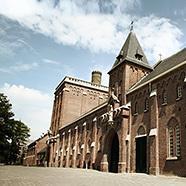
(Photo from latrappetrappist.com)
The commercial ties continued until 1980 when the monks took control back to the monastery as they re-launched their beers under the “La Trappe” brand. The growth of the La Trappe label, including their move to start exporting the beers in 1985, allowed for a complete renovation and expansion of the brewery in 1989. However, the aging population of the monastery caused the monks to take a radical decision. They pulled back from operating the brewery and set it up as a LLC in 1999 and allowed Bavaria Brewing (A Dutch brewery) to manage their beers. This brought them into conflict with the International Trappist Association who revoked their right to the use the “Authentic Trappist Product” logo. This proved to be a big blow to the reputation of the beers and the monastery.
On the positive side, this allowed for the monks to get their house in order. Many of the aging monks were transferred to specialized nursing homes and the remaining monks brought in new, younger blood to help revitalize the failing abbey. In 2005, Konigshoeven returned to the ITA fold and was granted the right to use the ATP logo. As part of the agreement, the monks took back supervisory control of the brewery and even work in it several hours a day. Today, the Abbey is a local leader in sustainable practices with a growing solar array and locally sourced barley. They are also planting a large forest, named PuurBos (PUUR Forest), to help offset their CO2 emissions.
Of all the Trappist breweries, La Trappe has the largest line of beers.
Puur – A light, hoppy beer of 4.7% ABV brewed with organic ingredients that was created in 2010.
Witte – A Belgian-style white ale brewed with wheat and Saphir hops containing 5.5% ABV. No spices are used. First brewed in 2003.
Blond – An Abbey-style blond ale of 6.5% ABV.
Dubbel – A traditional Abbey Double with 7% ABV
Tripel – An 8% ABV triple brewed using coriander and other spices.
Quadrupel – A 10% Strong Dark Ale and La Trappe’s most famous beer, introduced in 1991.
Oak-Aged - This is a new project that started in 2009 in which La Trappe ages their quad in oak barrels. Each batch is labeled on the bottle. You can see what variety of oak barrels were used by going to their batch registry.
Bockbier – A seasonal offering that hearkens back to an older recipe that was brewed at Konigshoeven. A 7% ABV dark, bockbier. Reintroduced in 2004.
Isid’or – A 7.5% ABV beer created in 2009 on the 125th anniversary of the brewery. It was named after brother Isidorus, the first brewing monk of Konigshoeven.
La Trappe is importered into the US by Artisanal Imports.
Abbaye Notre-Dame d’Orval – Viller-devant-Orval, Belgium (Est. 1124/Modern Est. 1928, Brewery Est. 1931)
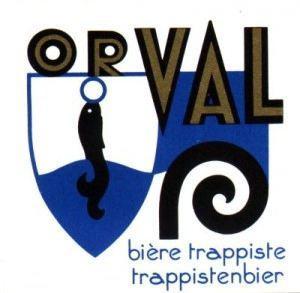
The most famous legend associated with Orval involves the origins of the monastery. Sometime during the 11th century, the widowed Mathilda of Tuscany was visiting the area and lost her wedding in a lake. She prayed for the return of her ring when a trout emerged with her ring in its mouth, returning it to her. She declared that this was truly a Valley of Gold(Val d’Or), giving rise to the name “Orval.” This also is the origin of the famous fish and ring logo used by the Abbaye Notre-Dame d’Orval. With the recovery of her ring, she gratefully provided funds for the founding of a monastery.
The area where Orval sits today has played host to a religious community off and on since the Merovingian Dynasty (A Frankish dynasty that lasted from the 5th-8th centuries CE). In 1070, a group of benedictine monks settled on the current site but moved some 40 years later. In 1124, a group of monks adhering to the Canons Regular order settled here and dedicated and consecrated the chapel. In need of additional aid, they sent for help from the newly formed and growing Cistercians who sent several monks in 1132 who merged with the Canons Regular monks who then converted the Abbey to the Cistercian Order.

(Picture from wikipedia.com)
Disaster struck the abbey in 1252 in the form of a devastating fire that took the monastery nearly a century to recover from. The fortunes of the monastery waxed and waned over the centuries with the various wars and plagues that ravaged Western Europe until the the final blow came at the hands of the French Revolutionary Army in 1793. During the 17th century, the abbey converted to the Trappist order but reverted back in 1785 before the abbey was destroyed a mere 8 years later.
The modern history of Orval begins in the late 19th century when the Harrene family acquired the lands that contained the ruins of the Orval abbey. In 1926, they donated the lands to the Trappist order so that a monastery could once more thrive on the spot that had hosted monks for over a millennium.
The Abbaye Notre-Dame d’Orval was founded in 1928. Within 4 years, Orval produced its first beer. Although the original abbey had hosted a brewery for most of its history, Orval’s beer was an original creation. Instead of recreating an old style, or emulating the other Trappists, they decided to brew something entirely new. The beer is believed to hold a lot in common with the Walloon region’s saisons, which at the time were influenced more by the wild yeast Brettanomyces than today’s saisons. In 1934, Orval trademarked their fish and ring logo.
Orval fans fall largely into two categories: fresh beer and aged beer. When the beer is fresh, it’s similar to a well hopped pale ale. Give the beer time in the bottle, and the Brettanomyces begins to change the beer creating a deep and earthy character. The beer is brewed with 3 varieties of pale malt and 2 varieties of crystal malt, Styrian Golding and Saaz hops, and clear liquid candi sugar. The most important part of the Orval character comes from its yeast. The first round of fermentation is brewed with a standard ale yeast. It’s during the second round of fermentation that a new mix of yeast is added to the tanks. The brewery uses a mix of “local” yeasts that includes the wild yeast strain Brettanomyces. This is also when the brewery dry-hops the beer, making it the only Trappist beer to go through this process. The beer is centrifuged and then dosed with the primary yeast during bottling. The process leaves enough Brettanomyces in the beer to allow it to exert its influence over time.
Petit Orval – A 3.4% ABV version of Orval that is served at the abbey as a table beer.
Orval – A Belgian pale ale that is dry-hopped and finished with Brettanomyces with an ABV of 6.9%.
Merchant du Vin is the US importer of Orval.
The Brewing Monks: Almost Trappist looks at 2 Trappist monasteries in the process of adding breweries to their abbeys, and 2 Trappists that are collaborating to make beer and could eventually add a brewery.
Resources/References
Journey to the source of Chimay Trappist Beer, by Francis Groff and Marcel Leroy, (Acacia, 2011)
Great Beers of Belgium by Michael Jackson, (Brewers Publications, 2008)
brew like a monk by Stan Hieronymus, (Brewers Publications, 2005)
The Oxford Companion to Beer edited by Garret Oliver, (Oxford University Press, 2012)
http://en.wikipedia.org/wiki/Trappist_order
http://en.wikipedia.org/wiki/Cistercian_order
http://www.trappist.be/en/pages/the-international-trappist-association

